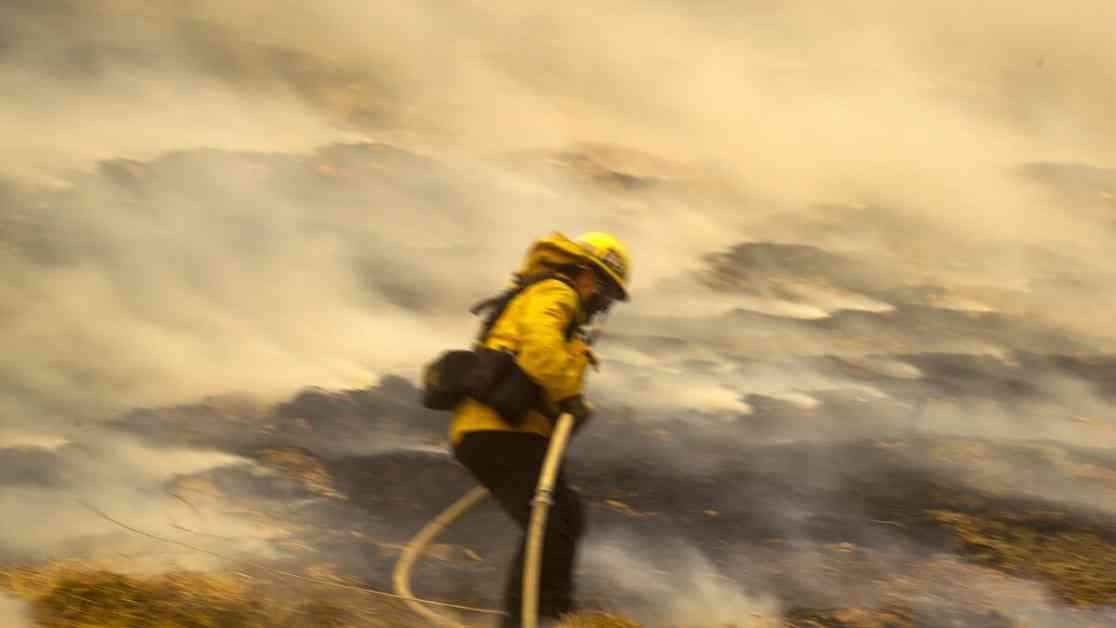Utility Giant Southern California Edison Accused of Suppressing Evidence in 2017 Fire Cases
In the heart of the Angeles National Forest in 2017, a raging inferno known as the Creek fire tore through the terrain, leaving a trail of destruction in its wake. The suspicion immediately fell on electric power lines as the potential cause of the fire, with witnesses recounting seeing a snapped line on a high-voltage transmission tower in Little Tujunga Canyon just as the blaze ignited.
The Creek fire, which decimated 70 homes, was a harrowing reminder of the devastating impact that wildfires can have on communities. It took seven long years for federal authorities to conclusively determine that Southern California Edison (SCE) was responsible for the fire. Last year, a federal investigator with the U.S. Forest Service made a pivotal breakthrough after gaining access to Edison’s data, unveiling a shocking revelation that the utility giant not only caused the fire but also allegedly withheld crucial evidence that could have expedited the origin determination.
The federal government swiftly filed a lawsuit against SCE, seeking a staggering $40 million in damages, claiming that the utility breached its duty of care and exhibited negligence in the maintenance and operation of its power lines. Edison vehemently denies any wrongdoing, adamantly refuting the allegations that its equipment sparked the devastating Creek fire.
The Creek fire, while significant in its own right, serves as a microcosm of the larger landscape of investigations into major wildfires. The recent focus has shifted to January’s Eaton fire in the Altadena area, which laid waste to 7,000 homes and claimed the lives of 17 individuals. Witnesses vividly recall seeing the fire erupt under an Edison transmission tower in Eaton Canyon, with video evidence further bolstering the suspicion surrounding the utility’s infrastructure.
Amidst mounting legal battles and swirling allegations, the stakes are undeniably high for SCE, as the outcome of the investigations could have profound financial repercussions for the utility. The stock price of Edison, which has already experienced a downturn in the aftermath of the fires, hangs precariously in the balance, awaiting the resolution of the investigations.
Experts caution against rushing to judgment, emphasizing the crucial need to allow investigators the time and resources to thoroughly examine the evidence. Stewart Gary, a seasoned public safety consultant and former fire chief, underscores the complexity of unraveling the intricate web of causation in wildfires, urging patience and diligence in the investigative process.
The specter of major utilities being implicated in catastrophic fires looms large, with past tragedies like the Camp fire in Paradise serving as stark reminders of the devastating consequences of infrastructure failures. PG&E’s culpability in the Camp fire, which resulted in a staggering $13.5 billion settlement and numerous criminal charges, stands as a cautionary tale for utilities across the state.
The recent focus on SCE in the wake of the Eaton fire is emblematic of a broader trend in wildfire investigations, where utility companies play a pivotal role in providing critical data to unravel the mysteries of fire origins. The contentious relationship between investigators and utilities, exemplified by the clandestine 1997 raid on Edison’s offices by Cal Fire, underscores the high-stakes nature of these inquiries.
The case of the Creek fire sheds light on the intricate dance between investigators and utilities, with allegations of evidence suppression and lack of cooperation heightening tensions in an already fraught landscape. The battle over crucial fault data related to the Lopez Circuit, a key piece of evidence in the Creek fire investigation, highlights the challenges faced by authorities in piecing together the puzzle of wildfire causation.
As the legal saga unfolds and the investigations into the Creek and Eaton fires continue, the fate of SCE hangs precariously in the balance, with profound implications for the utility industry and the communities it serves. The pursuit of justice and accountability in the aftermath of these devastating wildfires underscores the urgent need for transparency, cooperation, and diligence in fire investigations.


